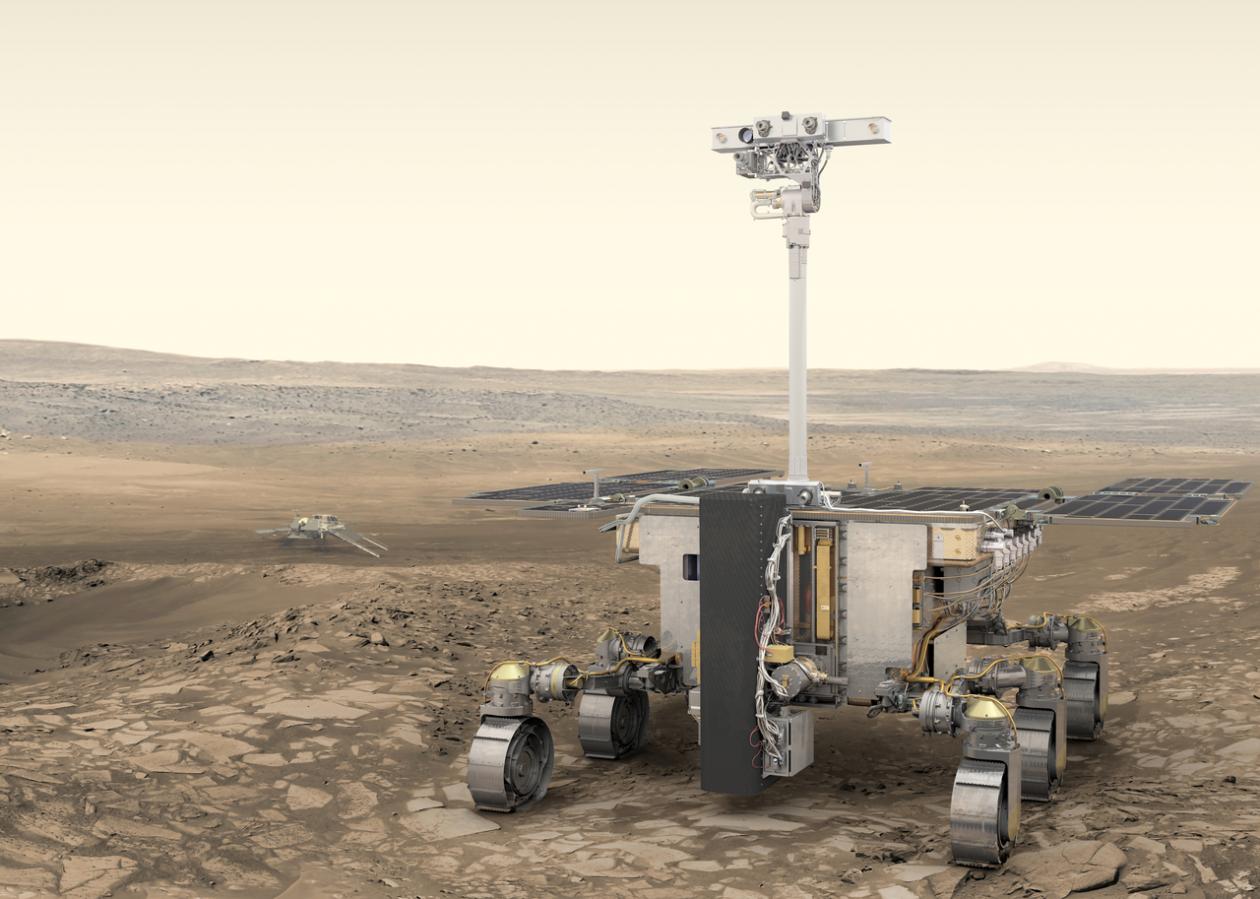From Hannover around the world and to the Mars: LZH delivers laser for ExoMars 2020
In three years, the rocket of the European-Russian ExoMars 2020 mission shall start its nine-month journey to Mars, together with a rover and surface platform. The flight model of the MOMA laser has reached the first milestone: the Laser Zentrum Hannover e.V. LZH has delivered the laser head to the NASA Goddard Space Flight Center, USA.
A major goal of the ExoMars mission is to search for past or present life on the Earth-like planet. One of the most important analytical instruments of the EXOMARS rover is the "Mars Organic Molecule Analyzer", MOMA for short. This is being developed together with further partners under the leadership of the Max Planck Institute for Solar System Research (MPS), Göttingen, Germany. The MOMA laser model, which has been delivered to the NASA Goddard Space Flight Center, is part of the Laser Desorption Mass Spectrometer (LD-MS) developed there. On Mars, it can identify and analyze organic matter. Organic molecules in the soil samples taken in situ could provide clues to possible forms of life.
Small, light and robust
In the past few years, the LZH has developed the diode-pumped solid-state laser head in the UV spectral range required for the investigations. The laser has an emission wavelength of 266 nm and an adjustable laser pulse energy of up to 130 μJ. Its most important unique features, however, are weight, size and robustness. With a length of about 20 cm it has a weight of only about 220 g. In addition, the laser head has to be pretty robust in order to function properly on Mars: Mechanical shocks during the launch of the rocket and during the landing on Mars and very large temperature differences. On the other hand, the laser optics used must withstand both the UV radiation of the laser and the ionizing cosmic radiation. The optics with space-qualified optical coatings were provided by the Laseroptik GmbH and evaluated at the LZH.
Optimally adapted to harsh conditions
"The laser is optimally adapted to the harsh environmental conditions in space and its mission on Mars," explains Dr. Peter Weßels, Head of the Solid-State Lasers Group at the LZH. "We use a passively Q-switched Nd:YAG oscillator pumped longitudinally over an optical fiber. The infrared light of the oscillator is converted into ultraviolet radiation using nonlinear crystals. A temperature control is to ensure the function even with changing ambient temperature and also allows to flexibly adjust the output pulse energy."
Before delivery of the model aircraft to NASA, the laser head was thoroughly tested at the MPS in Göttingen. Currently, it is being integrated into the mass spectrometer at the Goddard Space Flight Center and tested again. It then has to pass environmental tests again with NASA's MS before being re-integrated into the Rover back in Europe.
The project is being funded by the Space Agency of the German Aerospace Center with funds from the Federal Ministry of Economics and Technology on the basis of a decision by the German Bundestag under the funding reference numbers 50QX1002 and 50QX1402.
There are three figures for this press release.

